The first firearm suppressor was invented in 1910 by Hiram Maxim. Maxim was also the man responsible for the first true machine gun. While a suppressor may greatly reduce the noise of the shot, the term “silencer” is technically incorrect because there is no way to effectively silence any firearm. The noise of the shot may be dampened or suppressed but there are no silent firearms in existence.
Sound Components of a Shot and how a Suppressor Works:
There are four distinct components that together make up the noise we perceive as a gunshot. In order of loudness, these are:
- Pressure Wave from rapidly expanding propellant gases
- Sonic Crack of bullet
- Mechanical Action Noise
- Flight Noise
The pressure wave, produced by the rapidly expanding propellant gases is the only noise component that a suppressor can reduce. The suppressor reduces noise by two mechanisms. The first is it slows the release, through expansion and turbulence, of high-pressure propellant gases that we perceive as a “bang”. The second is due to Newton’s Law of Thermodynamics (Energy can neither be created or destroyed. It can only be converted from one form to another), where some of the kinetic energy of the noise impulse is converted to heat.
The only way to remove the sonic crack of a high velocity bullet is to utilize subsonic ammunition. Some cartridges are inherently subsonic, while most others can be downloaded to a velocity below the speed of sound. Some integral suppressors utilize ported barrels to bleed off propellant gas and thus reduce the velocity of the bullet.
Bullet flight noise is not loud enough to be sensed by the shooter. However, even subsonic bullets can be heard if they pass close by a person. This noise resembles a whooshing or swishing sound as the bullet flies through the air. Flight noise is too quiet to be heard above a sonic crack.
Suppressor Performance:
The most common method of measuring sounds is the Decibel system. Decibels are a logarithmic scale; meaning the values are non-linear. Eg. A change from 100 to 200 dB does not represent a doubling of the noise level. It represents an increase of 1000 times.
Most suppressors for supersonic cartridges can realistically be expected to reduce the noise of firing by 18-32 dB depending on the design. This represents the limit imposed by the noise of the supersonic projectile. As the suppressor reduces the noise of the shot, the sonic crack becomes the dominant sound. In subjective hearing tests, a suppressed, supersonic cartridge will sound approximately as loud as an unsuppressed .22 rimfire rifle or about 139-141 dB. Suppressors for subsonic cartridges may approach 40 dB of sound reduction however; this is the practical limit of sound reduction at this time. Subsonic systems can be as quiet as 115 dB, which is less than the action noise of a Sterling Submachine Gun (open bolt, blow back action). The dominant sound is the bullet striking the target.
Like firearms, different suppressor designs work best in different applications. Size and weight always work against noise reduction. As a result, one must find a balance between the size and weight of a suppressor and the degree of noise reduction desired for the mission. Suppressor designers are constantly trying to strike a balance between size and weight and noise reduction, which is why there are so many different designs available.
Secondary Benefits:
Suppressors make very effective muzzle brakes. A suppressor reduces the recoil of any firearm by about 30% or as much as a muzzle brake. Unlike a conventional muzzle brake, the suppressor will not blow noise back towards the shooter or cause dust and debris to be blown up, giving away the shooter’s location.
Suppressors on tactical weapons allow more accurate and faster target engagement due to reduced muzzle jump and reduced flash in low light conditions.
Suppressors on very large caliber rifles (.338 Lapua or .50 BMG) greatly reduce recoil, muzzle flash, noise and blast. They increases the shooter’s comfort level considerably over a conventional muzzle brake because the suppressor directs propellant gases forwards, away from the operator, in a very small arc.
The removal of painful muzzle blast can increase marksmanship as a result of a reduction in flinching, as well as increase the speed of follow up shots.
Reduced muzzle blast can allow longer training sessions and more shooting practice. The muzzle blast from large caliber weapons can be so intense that ear defenders and earplugs may not be effective. In this case the suppressor is the best method of protecting the operator’s health.
Suppressors practically eliminate muzzle flash so they are appropriate for use in dark conditions or where the atmosphere may contain explosive gases. A bit of tape over the muzzle of the suppressor will stop gases from entering the suppressor.
Once the first shot has been fired, the suppressor is full of burnt propellant gases, thus providing a non-explosive atmosphere inside the tube.
Types of Suppressors:
Suppressors can be divided into two main categories: Integral and Muzzle. Integral suppressors are designed as a permanent part of the firearm. Muzzle cans are designed to be fixed and removed easily and they do not affect the functioning of the firearm. Neither type of suppressor has an advantage in sound reduction. Integral systems are used where barrel porting is required to reduce the velocity of supersonic ammunition. Integral systems do not suffer point of impact changes as a result of the fitting or removal of the suppressor. They also tend to be more compact.
Mounting Systems:
There are many different ways to mount a suppressor. Two-point mounts are the sturdiest and the least likely to result in a misalignment. Mostly it is only integral suppressors that use two point mounts.
Employment and Techniques of Suppressed Firearms:
It is desirable to suppress a gunshot for many reasons. For entry teams, suppressed weapons allow increased command and control, as operators do not have to wear hearing protection. Suppressed weapons allow operators to distinguish between shots fired by one of the team or a perpetrator.
Suppressed shots are also more difficult to pinpoint, giving the operator an advantage over the perpetrator in the confusion of an armed encounter for greater survivability.
Military snipers can expect to be subjected to intense mortar or artillery fire should their location be inadvertently revealed. The suppressor could be the most important piece of “camouflage” used by a sniper team. The suppressor camouflages the rifle shot by almost eliminating muzzle flash and blast that can give away a sniper’s location. Proper positioning of the shooter to cause the bullet to pass close by one or more hard objects can add to the enemy’s confusion as the muffled shot will be veiled by the sonic crack which will seem to come from multiple locations as a result of it bouncing off hard objects.
Police snipers can also benefit from the use of suppressors to dampen the noise of the shot for public relations. Even experienced shooters view a quiet gunshot as being from a “less powerful” or “less dangerous” firearm. A full power sniper rifle fired in an urban location can attract unwanted public relations problems.
“Even when firing full power loads supersonically, a suppressor�.so dramatically reduces a sniper’s sound signature that I think ultimately we are going to see suppressors on all sniper rifles.”
— Major John Plaster – Advanced Ultimate Sniper video
Suppressors and Accuracy:
A properly designed and mounted suppressor should have no negative effect on the accuracy of the firearm. In fact there is some indication that suppressors actually increase accuracy by stripping the high velocity propellant gases from around the bullet. Without the suppressor, the gases push past the bullet, causing it to yaw slightly as it leaves the muzzle. A muzzle-mounted suppressor will change the point of impact of any firearm it is attached to. However with testing this effect can be corrected for by adjusting the sights.
Potential Problems and Hazards Associated with the Use of Suppressors:
One of the biggest hazards comes from improperly mounted suppressors or a suppressor that loosens during use. This can cause the suppressor to lose alignment with the bore, possibly resulting in baffle contact which can tear the suppressor off the firearm or blow it to bits in a catastrophic failure. During use, all suppressors should be checked for proper tightness regularly.
Not all suppressors are designed to survive full-auto fire or even a high volume of semi-auto fire. A high volume of fire through a suppressor not designed for it can cause the suppressor to fail from baffle collapse or extensive baffle damage. It can also destroy the rifle’s barrel from excessive heat buildup in as few as 200 rounds.
Minor suppressor hazards include burns from a hot tube as well as propellant gases and unburnt powder blowing out the ejection port of semi-automatic firearms. Operators should take care to wear proper eye protection when using suppressed weapons.
Maintenance and Cleaning:
Loose powder grains or carbon chips can be easily removed by shaking the suppressor vertically with the muzzle down. Compressed air may be used for cleaning and gun oil for preservation but washing with liquids and solvents is not recommended. After use, remove the suppressor or leave the action open to allow water to evaporate and to promote airflow. Give the suppressor a light coating of preservative oil inside and that is it.
Books on Firearm Silencers and Suppressors

Workbench Silencers
Here is a slew of new and interesting improvised gun silencer designs featuring innovative couplings plus variations on aluminum cans, oil filters, PVC pipe, plumbing devices, water sprinkler pieces and other unique materials. Warning: It is illegal to possess or make firearm silencers without BATF registration. For academic study only.
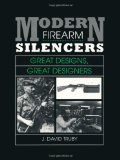
Modern Firearm Silencers
This illustrated report on suppressor technology presents innovative designs of well-known suppressor manufacturers and offers definitive comparisons of models based on prices, features, kits, independent manufacturers and technological advances. It also examines the history of the gun silencer and the attitudes of the U.S. government, the public and terrorists about its usage.
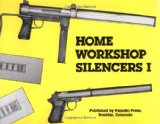
Home Workshop Silencers I
More than fifty 9″ x 12″ working machinist’s drawings present clear step-by-step directions for building three different advanced firearm silencers for submachine guns and pistols. Improvised materials and machining techniques are suggested. For reference and historical purposes only.

Hayduke Silencer Book
Learn how to make firearm silencers from common items found around the house. George Hayduke, the Master of Revenge, will show you how! Enter the world of muffled mayhem with these simple, effective and legal firearm silencer designs. For information purposes only.
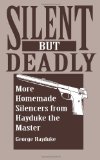
Silent But Deadly: More Homemade Silencers From Hayduke The Master
Despite what the Brady bunch might say, gun silencers serve some very civilized functions and contribute to a saner, quieter way of life, which is why a lot of folks like them. After reading The Hayduke Silencer Book, many readers shared their own ideas for simple designs you can build at home, legally. Here is the cream of the crop.
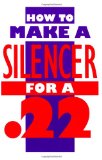
How To Make A Silencer For A .22
This handy little manual teaches you everything you need to know to legally manufacture a .22 rifle or pistol silencer – without a lathe or welder. These inexpensive homemade silencers give you all the suppression you need, thread on solidly, do not affect your accuracy or the gun’s functioning and last for hundreds of rounds. For academic study only.

How to Make a Silencer For A .45
Because it does not produce a sonic “crack,” the .45 is an ideal pistol for a silencer. Here is a nuts-and-bolts guide to making your own silencer for the Colt 1911 Government Model .45 and its clones. Includes construction details for all components, manufacturing tips that will save you time and effort, and plenty of clear illustrations. For academic study only.
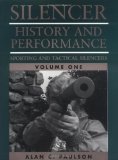
Sporting and Tactical Silencers
This is the most significant book on firearm silencers in years. Find out the story behind and incredible capabilities of modern silencers used by elite military units and secretive government agencies. Author Alan Paulson has been called “the dean of the American silencer experts today.”
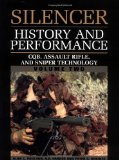
Silencer History and Performance: Cqb, Assault Rifle, and Sniper Technology
This highly anticipated second volume in the Silencer History and Performance series provides an unprecedented look into the evolution, tactical employment and performance of historic and state-of-the-art silenced firearms suitable for close-quarters combat, long-distance sniping and other professional applications. It chronicles the production of pioneering silenced weapons used during World War II and the Cold War as well as the more sophisticated low-signature designs and tactics that emerged from the Vietnam War and again during an explosion of creative development in the 1990s. The authors have combined recently declassified materials, numerous confidential sources and years of hands-on evaluations to reveal a wealth of information about today’s incredible screw-on and integral suppressors.

Workbench Silencers : The Art Of Improvised Designs (Silencers)
Here is a slew of new and interesting improvised silencer designs featuring innovative couplings plus variations on aluminum cans, oil filters, PVC pipe, plumbing devices, water sprinkler pieces and other unique materials. Warning: It is illegal to possess or make firearm silencers without BATF registration. For academic study only.

How To Make A Silencer For A Mini-14
The Ruger Mini-14 may be the ultimate plinker, hunting and survival rifle. If you already have the many accessories available for it, why not complete your collection with a do-it-yourself silencer? Here are step-by-step instructions to show you how to construct a tough, working silencer able to handle the high pressures generated by the Mini-14’s .223 round. All BATF rules apply.
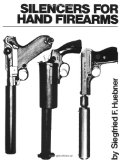
Silencers For Hand Firearms
One of the world’s foremost experts, Siegfried Huebner has published numerous books and articles in his native Germany, and he has drawn from extensive research at the Mauser works, Heckler & Koch and the German army proving ground to bring to you this, his first English-language text on silencers. This complete and authoritative guide includes chapters on the principles of silencers, WWII silencers, clandestine weapons and more.